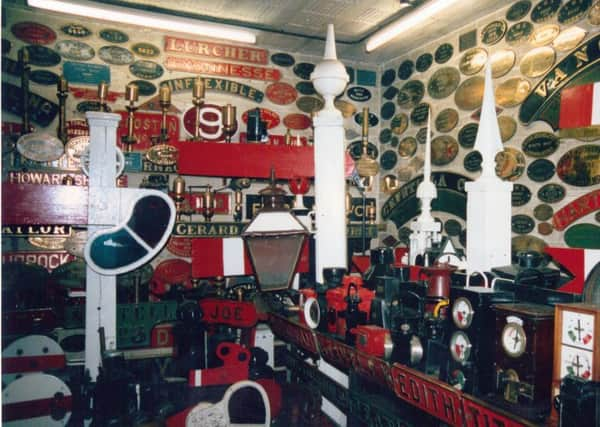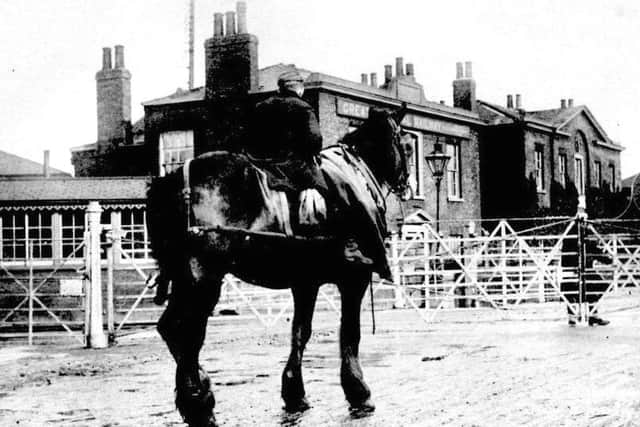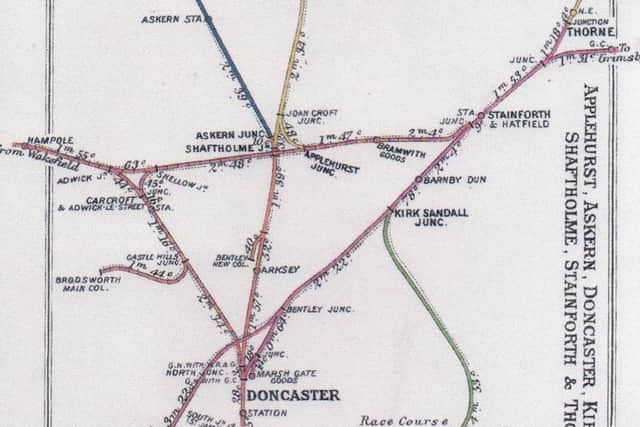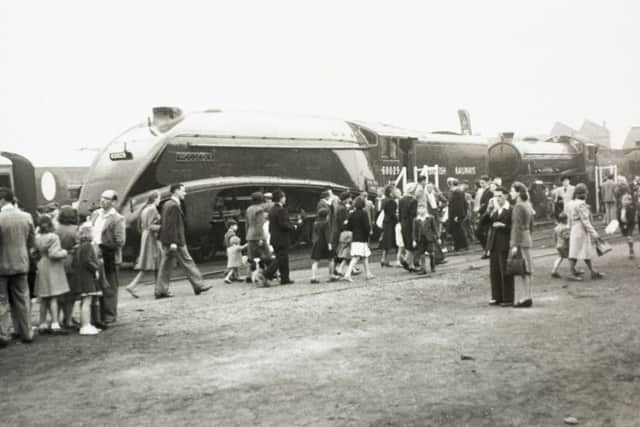Heritage of railways in Doncaster is brought into sharp focus


Engineer Sir Nigel Gresley designed locomotives at Doncaster Works including two which, for many people, define Britain’s railway heritage – both the Mallard and the Flying Scotsman. Taking a closer look at the town reveals many more stories and artefacts relating to the past, present and future of Doncaster’s railways.
Doncaster is a main transport hub with a complex of railway routes constrained by the crossing of the River Don.


Advertisement
Hide AdAdvertisement
Hide AdThe East Coast Main Line is joined by the Sheffield to Hull line through the station and over the bridge. South of the station, lines run in from Lincoln and Worksop whilst north of the river routes lead to Knottingley and Leeds.
At Thorne the Hull line branches to Scunthorpe. Goods traffic from Leeds stays north of the river by cutting across from Adwick to Hatfield while other goods traffic uses the Doncaster Avoiding Line from Hexthorpe to Bentley or the line from Bessacarr to Kirk Sandall. Add to these railway lines the dismantled railways and colliery branches.
Then there are the buildings to consider. The station, with its fine main hall, was built in 1938 and contains within it the earlier 1849 building. Across the yard from platform eight is the Great Northern Railway Plant works, one of the most important in Britain.
The visible southern end dates from 1853 and, hiding behind, are the extensive locomotive shops, some of which are still in use today. North Bridge was constructed in 1901 to overcome the problems caused to both road and rail vehicles by the level crossing which pre-dates it. Three stations near the town centre no longer exist, but each of Cherry Tree Lane, St James Bridge and York Road tell part of the story of Doncaster.


Advertisement
Hide AdAdvertisement
Hide AdDoncaster Museum has a wide collection of artefacts and pictures on display reflecting the borough’s railway heritage. This has been recognised as a significant aspect of Doncaster’s heritage, together with ancient history, horse-racing and coalmining.
In 2002, former tourism manager Colin Joy discovered that there exists in the town an unrivalled collection of small railway artefacts known as the Doncaster Grammar School Collection, which had been assembled over a period of 50 years by railway enthusiast Tony Peart and his friend Wilton Jones.
Both Tony and Wilton passed away, but the successive trustees of the collection have continued to work with Doncaster Council looking for ways to put the collection on public display.
This aim will soon be achieved with the new plans to house the Museum, Art Gallery, Archives, and Central Library under one roof along with a Railway Heritage Centre.


Advertisement
Hide AdAdvertisement
Hide AdThis new, purpose-built centre will showcase the Grammar School artefacts and tell the story of Doncaster’s railway heritage.
The Frenchgate Centre is currently hosting an exhibition curated by the trustees of the Grammar School Collection in partnership with Doncaster Heritage Services.
The exhibition features artefacts from the collection and provides further information on plans for the new building. It is also an opportunity for people to share their stories and memories of Doncaster’s railways.
From Thomas Bray, the fireman on Mallard’s speed record run, to the women who took on traditionally male roles in the Second World War – the people involved in the industry reveal the true story of Doncaster’s railway heritage.


Advertisement
Hide AdAdvertisement
Hide AdWith over 2000 people employed in more than 20 organisations, the rail industry in Doncaster today plays an important role in the area’s economy and will continue to do so in the future.
n Making Tracks – The Next Stop railway exhibition runs in Frenchgate Shopping Centre until Monday 5 March 2018.